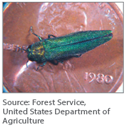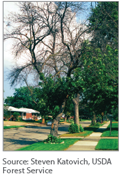To Write a Cause-Effect Essay
- Question the situation.
- Subject: What specific topic will you write about?
- Purpose: What cause-effect relationship are you trying to show?
- Audience: Who will read this essay? How would you like them to react?
- Plan your essay.
- Choose a specific topic that has a clear cause-effect relationship.
- Create a cause-effect chart to explore your prior knowledge about the topic.
- Think about whether you want to focus on causes, effects, or both.
- Research your topic.
- Searching: Consult primary and secondary sources to learn about your topic. (See pages 376–389.)
- Focusing: Form a thesis statement, establishing a clear cause-effect relationship.
Topic: The Renaissance
Thought: led to the discovery of the Americas
Thesis statement: The scientific advancements and increased trade brought on by the Renaissance led to the discovery of the Americas.
- Create the first draft of your essay.
- Begin with an opening paragraph that introduces your topic in an interesting way and includes a thesis that points to a cause-effect relationship.
- Follow with middle paragraphs that discuss the causes and effects.
- Organize middle paragraphs with topic sentences and a variety of details that analyze the causes and effects.
- End with a closing paragraph that summarizes the cause-effect relationship.
- Improve your first draft.
- Evaluate your first draft.
Purpose: Does the essay effectively fulfill your purpose?
Audience: Will the reader understand the cause- effect relationship?
- Revise your writing.
Rewrite any sentences that are confusing or unclear.
Add connecting words or transitions.
- Edit your revised writing.
Check your writing for accuracy using pages 190–195 as a guide.
- Evaluate your first draft.
- Present the final copy of your essay on a blog or read it out loud to your classmates.
Cause-Effect Essay
In this cause-effect essay, a student analyzes the effects of an invasive species on emerald ash trees.
Unwelcome Visitors
The beginning introduces the cause-effect relationship and leads to the thesis statement (underlined).Many departments of natural resources (DNRs) are working feverishly to enforce regulations that prohibit the import of firewood into their states. It is now commonplace to find bright “Don’t Move Firewood” alerts alongside highways throughout states on the East Coast and in the Midwest. These efforts are aimed at halting the transport of a dangerous and invasive critter with a body size less than the width of a penny. The emerald ash borer’s presence in North America is wreaking havoc on an entire tree species, harming economies, and threatening the stability of ecosystems.
The first middle paragraph provides background information and discusses the cause.
The emerald ash borer is an exotic, invasive wood-boring beetle that makes its home in ash trees. The borer larvae are capable of infesting and killing entire landscapes of ash plantings by feeding on phloem and xylem tissue under a tree’s bark. The voracious eaters disrupt the flow of carbohydrates and water between a tree’s canopy and its roots, eventually killing the tree (Herms). Natives of eastern Asia, the beetles were not discovered in North America until 2002, when large numbers of ash trees began dying in southeast Michigan. Biologists theorize that the borers had infested wooden boxes and pallets imported into areas of Michigan, Ohio, and Ontario.
Once inside the states, the invasive species caused much devastation to ash tree populations. In both southeast Michigan and northwest Ohio, the emerald ash borer has killed millions of ash trees. Through transport, they have crept their way into a half dozen other states east of the Mississippi. In total, the ash borer is believed to have killed approximately 50 million trees, though the destruction has been mostly isolated to Michigan and Ohio. Both states have suffered economically and ecologically, while surrounding states have doubled their efforts to prevent the same damage.
The emerald ash borer’s effects have damaged Michigan’s and Ohio’s wood industries. In Ohio, a substantial tree-nursery economy lost millions. Before emerald ash borers arrived, the wholesale value of
ash trees sold annually at local nurseries was $2 million (Herms). The other middle paragraphs discuss the effects.Now that number is zero. Meanwhile, the cost of removing dead and dying ash trees has squeezed already tight municipal budgets in both Great Lakes neighbors. Homeowners pay up to $1,000 dollars for tree removal, and counties must factor in annual costs for insecticide treatments. The negative economic impact also extends to sawmills and firewood dealers in both states. Over the next 10 years, economists conservatively estimate that the economic impact of ash borers will reach $20 billion (Gleason).

Potentially more damaging is the emerald ash borer’s effect on forest ecosystems. Ash species grow ubiquitously in forests in the eastern half of the United States. The spread of emerald ash borers into those forests could essentially kill off all ash species, which have not yet developed a defense mechanism against the beetles. Were this die-off to occur, entire forest ecosystems would be affected, because ash trees provide essential thermal cover and protection for various wildlife species and plant seeds, from small mammals to insects to different plant species (Knight).
The ending paragraph revisits the essay’s beginning ideas and sums up the cause-effect relationship.In an attempt to counter the spread of emerald ash borers, the U.S. Department of Agriculture researched and harvested a wasp parasite found in Asia that kills the emerald ash borer larvae. The parasite has been released in many states affected by borers. Additionally, state DNRs have implemented fines and advertising campaigns aimed at eliminating the transport of wood between state lines. Each attempt costs time and money but is necessary to protect local economies and ecosystems from the wrath of a tiny, yet perilous beetle.

